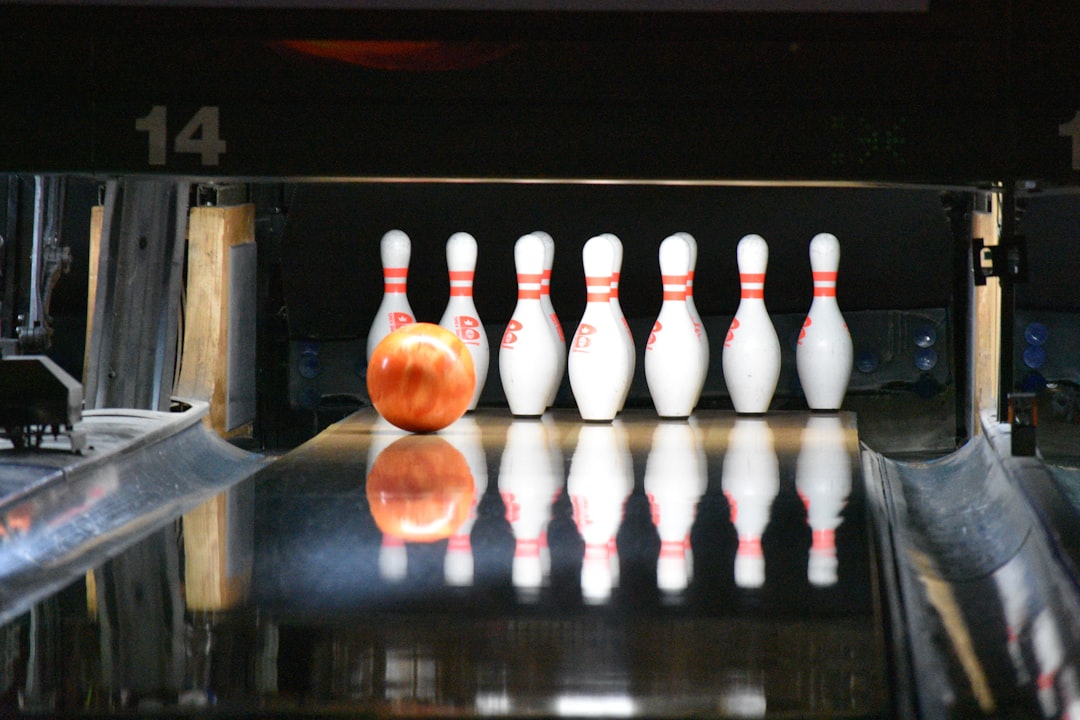Uncovering the Most Difficult Bowling Skill
Bowling is a beloved game enjoyed by many, both professionally and recreationally. It is an exciting and challenging sport that requires practice to master, but what is the toughest skill to learn? This article will explore how the bowling revolution has changed the game, and what skills are most difficult for players to acquire in order to become successful. From hand positioning to proper release technique, it takes a combination of physical ability and mental focus to achieve success on the lanes.
What is the toughest bowling skill to learn?
There are a lot of techniques, approach, ball motion, bowling ball swing and bowling ball release that are tough to learn. I think the 7-10 split and greek church is the hardest shot in bowling or convert. The difficulty of these two splits are hard to pick up even for professional bowlers and many bowlers in this sport.
Aim & Alignment
Bowling is a game that requires skill and precision, and one of the most important aspects of the sport is aim and alignment. These two factors play a crucial role in determining whether you’ll be left standing or knocked down pins. To develop your skill set in bowling, it’s essential to understand how aim and alignment work together to create a successful shot.
Aim refers to where you want the ball to go, while alignment refers to the position of your body as you approach the lane. A skillful bowler will use both these factors to make sure their ball hits its target consistently. When aiming, focus on a specific spot on the lane rather than just throwing blindly towards the pins. Proper alignment ensures that your body is positioned correctly for optimal delivery, giving you more control over your shots.
Understanding the Lane and Ball
Bowling is a game that has been enjoyed by people of all ages and skill levels for generations. However, when it comes to bowling fundamentals, many amateurs can struggle with understanding the lane and ball. Fortunately, it’s possible to improve your skills once you understand the basics.
The first fundamental aspect of bowling is understanding the lane itself. The lane is a long and narrow surface that extends towards the pins at the end of the alley. As an amateur bowler, it’s important to recognize that each lane may have different characteristics such as length, oil patterns or slope towards the pins.
The second fundamental aspect of bowling is understanding how speed affects your ball’s trajectory. Speed is an essential factor in determining the trajectory and overall success of a bowling shot. The speed of your bowling ball has a direct impact on the amount of hook, pin action, and lane conditions. Having the right ball speed will increase the likelihood of getting a strike or hitting your intended target.
- Hook potential: The speed at which you throw the ball affects its ability to hook (curve) when rolling down the lane. Slower ball speeds allow the ball to grip the lane, while faster ball speeds tend to reduce the hook potential. To achieve the right balance, you have to know your ball’s reaction, the oil pattern on the lane, and make adjustments to your delivery speed accordingly
- Pin action: Faster ball speeds may produce more pin action upon impact but might also result in deflection, reducing the chances of a strike. Slower speeds, on the other hand, maximize the ball’s contact time with the pins, causing them to mix more effectively and increase the probability of a strike. However, throwing the ball too slow may lead to weaker pin action and fewer strikes.
- Lane conditions: The oil pattern on the lane plays a significant role in determining the appropriate speed for your shot. On a heavily oiled lane, you may need to throw the ball slower to generate more friction and hook. In contrast, on a drier lane, a faster speed may help prevent the ball from overreacting and crossing over the headpin.
- Consistency: Maintaining consistent speed from shot to shot is crucial to achieving a high average and improving your game. Even slight variations in your ball’s speed can significantly change its reaction on the lane and make it harder to accurately predict and adjust for the bowling conditions.
In conclusion, understanding and mastering the impact of speed on your ball’s trajectory is a vital aspect of becoming a better bowler. By consistently adjusting your speed to match the lane conditions, you can maximize your hook potential, improve your pin action, and ultimately achieve greater success on the lanes. When you release your ball on the lane, its speed and spin determine how it will travel down towards the pins.
Perfecting Your Delivery
When it comes to bowling, delivering the ball perfectly down the lane is all about precision and consistency. Whether you are aiming for a strike or a spare, every little detail counts. One vital aspect of perfecting your delivery is ensuring that you maintain proper footwork throughout your approach. The way you move towards the foul line can greatly affect the trajectory of your ball.
Another key attribute to delivering a successful shot is focusing on one side of the lane. This will help you create an angle that will allow your ball to react appropriately once it hits the pins. You should also pay close attention to where you stand when releasing the ball, as this can have an impact on both speed and accuracy.
In order to master your delivery, practice makes perfect. Take some time to analyze each aspect of your technique and make adjustments accordingly until you find what works best for you.
Reading the Lane
Bowling is a sport that has been around for centuries, and it continues to be one of the most popular indoor pastimes in the world. One of the key elements of successful bowling is being able to read the lane. Knowing how to interpret the subtle differences in each lane can greatly increase your chances of bowling a strike or spare.
Learning how to bowl effectively takes time and practice, but understanding how to read the lane is an essential part of any bowler’s skillset. Bowlers use visual cues such as oil patterns, ball rotation, and angle of entry to determine where their ball should be placed on the lane for optimal results. Even small adjustments can make all the difference between hitting or missing your target.
At the highest level of competitive bowling, reading the lane becomes even more crucial. Professional bowlers often have to adjust their technique on-the-fly based on changing conditions during a match.
Controlling Your Spin and Aiming
Controlling Your Spin and Aiming in bowling is an essential skill that every bowler must learn. Whether you’re playing for fun or as a pro, executing the perfect outswinger can give you the upper hand in any game. To throw an outswinger accurately, you have to control your spin and aim correctly.
The first step to controlling your spin is to choose the right ball. There are various types of balls available in the market, each designed for different spins. Once you’ve picked the right ball, practice throwing it with different grips until you find one that suits your style. Remember that finding your grip may take some time and patience; don’t rush it.
Next, work on your aiming technique. Aiming is a crucial aspect of bowling since it determines where your ball will go once released.
Mastering the Right Speed
Bowling is a sport that requires precision and control. For a bowler to throw the ball accurately, they need to understand how to control their spin and aim. The speed of the ball also plays a vital role in determining accuracy. In this article, we will discuss techniques that can help bowlers improve their spin and aim.
To start with, it is essential to understand how to control your spin on the ball. A perfect roll will give you an opportunity for more strikes since it helps maximize pin action. In contrast, poor rotation leads to less power when hitting pins on one side of the lane. One technique for controlling your spin is by focusing on your hand positioning during release time. Try releasing the ball with your fingers positioned behind it instead of trying too hard to get under it.
Bowling Green State University
Conclusion: Acquiring a Variety of Skills
In conclusion, acquiring a variety of skills is essential for personal and professional growth. This is particularly true in the context of bowling, where developing different skills can make a significant difference in one’s performance on the lanes. While some skills may come more naturally to certain individuals, it’s important to practice and develop all aspects of the game.
One skill that many bowlers find challenging to master is spares. The ability to consistently pick up spares can be just as important as getting strikes when it comes to achieving high scores. Other skills that are crucial for success include having good form and technique, being able to adjust to changing lane conditions, and maintaining focus and mental toughness throughout a match.
Ultimately, by working on various aspects of their game, bowlers can become more well-rounded players who are better equipped to handle any situation they encounter on the lanes. Whether you’re just starting out or looking to take your game to the next level, focusing on developing a variety of skills will pay off in the long run.
Shop Bowling Balls, Shoes, Bags & More | Top Rated Online Pro Shop




